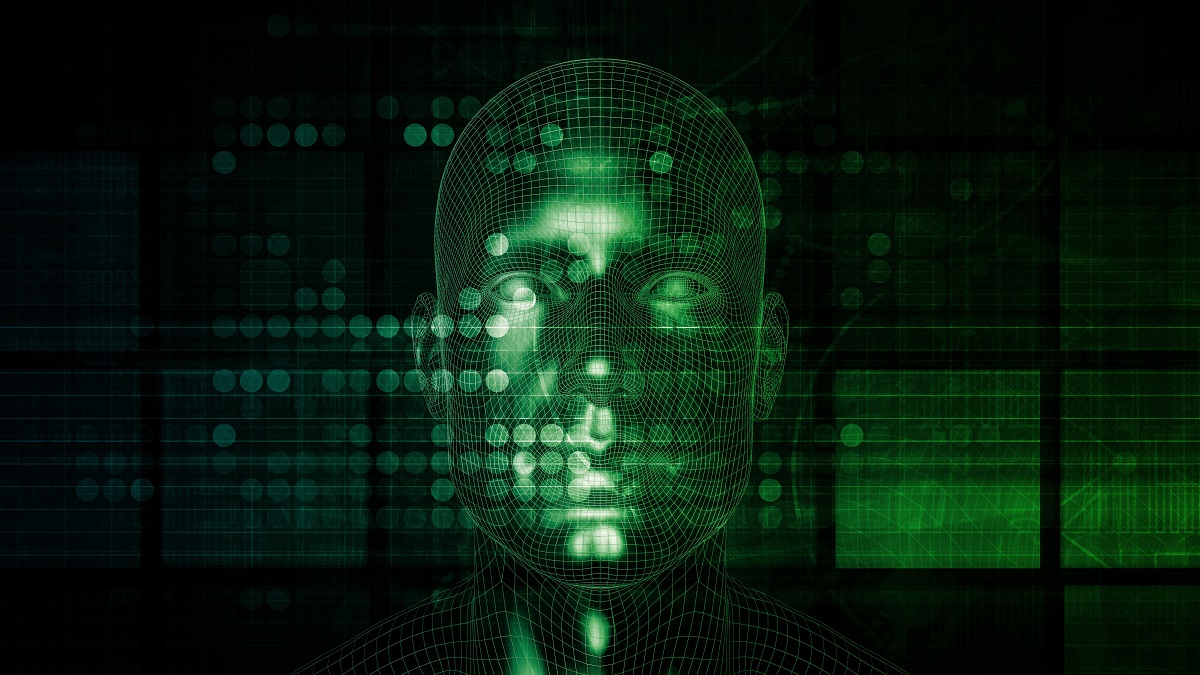
Federated learning trains an algorithm across several decentralized edge servers or devices using samples of local data. Federated learning does not rely on central servers to exchange information. It uses local data samples to train multiple algorithms simultaneously. This approach can help overcome some of security concerns associated with centralized servers. However, federated education is not suitable for all situations. Federated learning is not practical for many organizations.
Defining federated learning
In machine learning, federated learning refers to a technique in which the central model can learn from a diverse, augmented set of samples. This is useful for when multiple models need to be trained at different locations with different network and hardware conditions. Patient data from one hospital may not be identical to that from another. This is because patient characteristics are different between hospitals and may be very different. This is because the patient characteristics vary between hospitals. For example, gender ratios and age distributions are often different. Additionally, complex cases are often seen in tertiary-care hospitals. Federalized learning is an efficient method to train and deploy models at multiple sites, while requiring minimal resources.
Multiple devices can be federated to learn the same machine-learning algorithm. These devices use data stored in their local systems and can update a single model with information coming from different sources. They communicate only information about model changes to the cloud. The data is encrypted so no one can access it. Mobile phones can thus study a common prediction modeling while still keeping the training data local.

Implementing federated learning on edge devices
Data scientists have an exciting opportunity to implement federated education on edge devices. The growing volume of data generated by connected devices requires a new learning paradigm. A new learning paradigm is required due to the increasing computational power and privacy concerns associated with these devices. This data must be stored locally and processed. It is easy to implement federated education on edge devices. Here are some benefits. Continue reading to discover how this emerging technology could benefit your data science projects.
Federated learning, also known as collaborative learning, is a method of training an algorithm on many edge devices. This is different from traditional centralized machine intelligence techniques that rely on one server to train models. By allowing training from multiple edge devices, different actors can develop a single machine learning model, despite the heterogeneous data sets. This approach also supports heterogeneous data which is crucial for many new applications.
Federal learning poses security concerns
FL's fundamental philosophy is privacy. This concept reduces the user's data footprint by using central servers or networks. However, FL is not immune to security attacks. Technology is still in its infancy and cannot address privacy concerns by default. This section will discuss some of the privacy issues that FL faces and some of the recent advances in the field. This section provides a brief overview of the most important security issues and their possible solutions.
TEE (trusted execution environment) can be used to address the privacy issue in federated training. TEE is an encrypted environment where code is executed in a secure area of the main processor. To prevent tampering with the data, encryption is used on all participating nodes. This approach is more complicated than traditional multi-party computing. It is also a better choice for large-scale learning systems.

Potential uses of federated learning
Apart from improving algorithmic modeling, federatedlearning also allows medical practitioners the ability to train machine learning algorithms from non-colocated datasets. This helps to avoid the disclosure of sensitive patient data or violating privacy regulations. HIPAA and GDPR both set strict regulations for the handling of sensitive data, and federated learning can help overcome these problems while still allowing scientists to use this type of data. Federated learning can be used for medical research in many ways.
Federated learning can be used to develop a supervised machine learning system. It can be used for training algorithms with large datasets. This method uses secure aggregation and differential privacy to ensure that no information is disclosed. This method also improves performance for datasets like the Wisconsin Breast Cancer data. This system can also improve accuracy for individual models in medical image, as indicated by its name.
FAQ
Which are some examples for AI applications?
AI is used in many areas, including finance, healthcare, manufacturing, transportation, energy, education, government, law enforcement, and defense. Here are just some examples:
-
Finance – AI is already helping banks detect fraud. AI can scan millions upon millions of transactions per day to flag suspicious activity.
-
Healthcare – AI is used in healthcare to detect cancerous cells and recommend treatment options.
-
Manufacturing – Artificial Intelligence is used in factories for efficiency improvements and cost reductions.
-
Transportation – Self-driving cars were successfully tested in California. They are being tested in various parts of the world.
-
Energy - AI is being used by utilities to monitor power usage patterns.
-
Education - AI is being used for educational purposes. Students can use their smartphones to interact with robots.
-
Government - AI can be used within government to track terrorists, criminals, or missing people.
-
Law Enforcement-Ai is being used to assist police investigations. Detectives can search databases containing thousands of hours of CCTV footage.
-
Defense - AI can be used offensively or defensively. It is possible to hack into enemy computers using AI systems. In defense, AI systems can be used to defend military bases from cyberattacks.
How does AI impact the workplace
It will transform the way that we work. We can automate repetitive tasks, which will free up employees to spend their time on more valuable activities.
It will improve customer service and help businesses deliver better products and services.
It will allow us to predict future trends and opportunities.
It will allow organizations to gain a competitive advantage over their competitors.
Companies that fail to adopt AI will fall behind.
AI is good or bad?
Both positive and negative aspects of AI can be seen. Positively, AI makes things easier than ever. There is no need to spend hours creating programs to do things like spreadsheets and word processing. Instead, instead we ask our computers how to do these tasks.
On the negative side, people fear that AI will replace humans. Many believe that robots will eventually become smarter than their creators. They may even take over jobs.
Which countries lead the AI market and why?
China leads the global Artificial Intelligence market with more than $2 billion in revenue generated in 2018. China's AI industry is led Baidu, Alibaba Group Holding Ltd. Tencent Holdings Ltd. Huawei Technologies Co. Ltd., Xiaomi Technology Inc.
China's government is heavily involved in the development and deployment of AI. The Chinese government has set up several research centers dedicated to improving AI capabilities. These centers include the National Laboratory of Pattern Recognition and State Key Lab of Virtual Reality Technology and Systems.
China also hosts some of the most important companies worldwide, including Tencent, Baidu and Tencent. All these companies are active in developing their own AI strategies.
India is another country which is making great progress in the area of AI development and related technologies. India's government is currently focusing its efforts on developing a robust AI ecosystem.
Are there risks associated with AI use?
You can be sure. They will always be. AI poses a significant threat for society as a whole, according to experts. Others argue that AI is necessary and beneficial to improve the quality life.
AI's potential misuse is the biggest concern. If AI becomes too powerful, it could lead to dangerous outcomes. This includes things like autonomous weapons and robot overlords.
AI could eventually replace jobs. Many fear that AI will replace humans. Some people believe artificial intelligence could allow workers to be more focused on their jobs.
For example, some economists predict that automation may increase productivity while decreasing unemployment.
Who invented AI and why?
Alan Turing
Turing was first born in 1912. His mother was a nurse and his father was a minister. He excelled in mathematics at school but was depressed when he was rejected by Cambridge University. He started playing chess and won numerous tournaments. After World War II, he worked in Britain's top-secret code-breaking center Bletchley Park where he cracked German codes.
1954 was his death.
John McCarthy
McCarthy was conceived in 1928. He was a Princeton University mathematician before joining MIT. There he developed the LISP programming language. By 1957 he had created the foundations of modern AI.
He died in 2011.
What's the future for AI?
Artificial intelligence (AI) is not about creating machines that are more intelligent than we, but rather learning from our mistakes and improving over time.
We need machines that can learn.
This would allow for the development of algorithms that can teach one another by example.
We should also look into the possibility to design our own learning algorithm.
You must ensure they can adapt to any situation.
Statistics
- More than 70 percent of users claim they book trips on their phones, review travel tips, and research local landmarks and restaurants. (builtin.com)
- By using BrainBox AI, commercial buildings can reduce total energy costs by 25% and improves occupant comfort by 60%. (analyticsinsight.net)
- While all of it is still what seems like a far way off, the future of this technology presents a Catch-22, able to solve the world's problems and likely to power all the A.I. systems on earth, but also incredibly dangerous in the wrong hands. (forbes.com)
- In 2019, AI adoption among large companies increased by 47% compared to 2018, according to the latest Artificial IntelligenceIndex report. (marsner.com)
- The company's AI team trained an image recognition model to 85 percent accuracy using billions of public Instagram photos tagged with hashtags. (builtin.com)
External Links
How To
How to set Google Home up
Google Home is a digital assistant powered artificial intelligence. It uses sophisticated algorithms, natural language processing, and artificial intelligence to answer questions and perform tasks like controlling smart home devices, playing music and making phone calls. Google Assistant lets you do everything: search the web, set timers, create reminds, and then have those reminders sent to your mobile phone.
Google Home seamlessly integrates with Android phones and iPhones. This allows you to interact directly with your Google Account from your mobile device. Connecting an iPhone or iPad to Google Home over WiFi will allow you to take advantage features such as Apple Pay, Siri Shortcuts, third-party applications, and other Google Home features.
Google Home is like every other Google product. It comes with many useful functions. Google Home will remember what you say and learn your routines. You don't have to tell it how to adjust the temperature or turn on the lights when you get up in the morning. Instead, you can say "Hey Google" to let it know what your needs are.
Follow these steps to set up Google Home:
-
Turn on Google Home.
-
Hold the Action button at the top of your Google Home.
-
The Setup Wizard appears.
-
Continue
-
Enter your email and password.
-
Click on Sign in
-
Google Home is now available